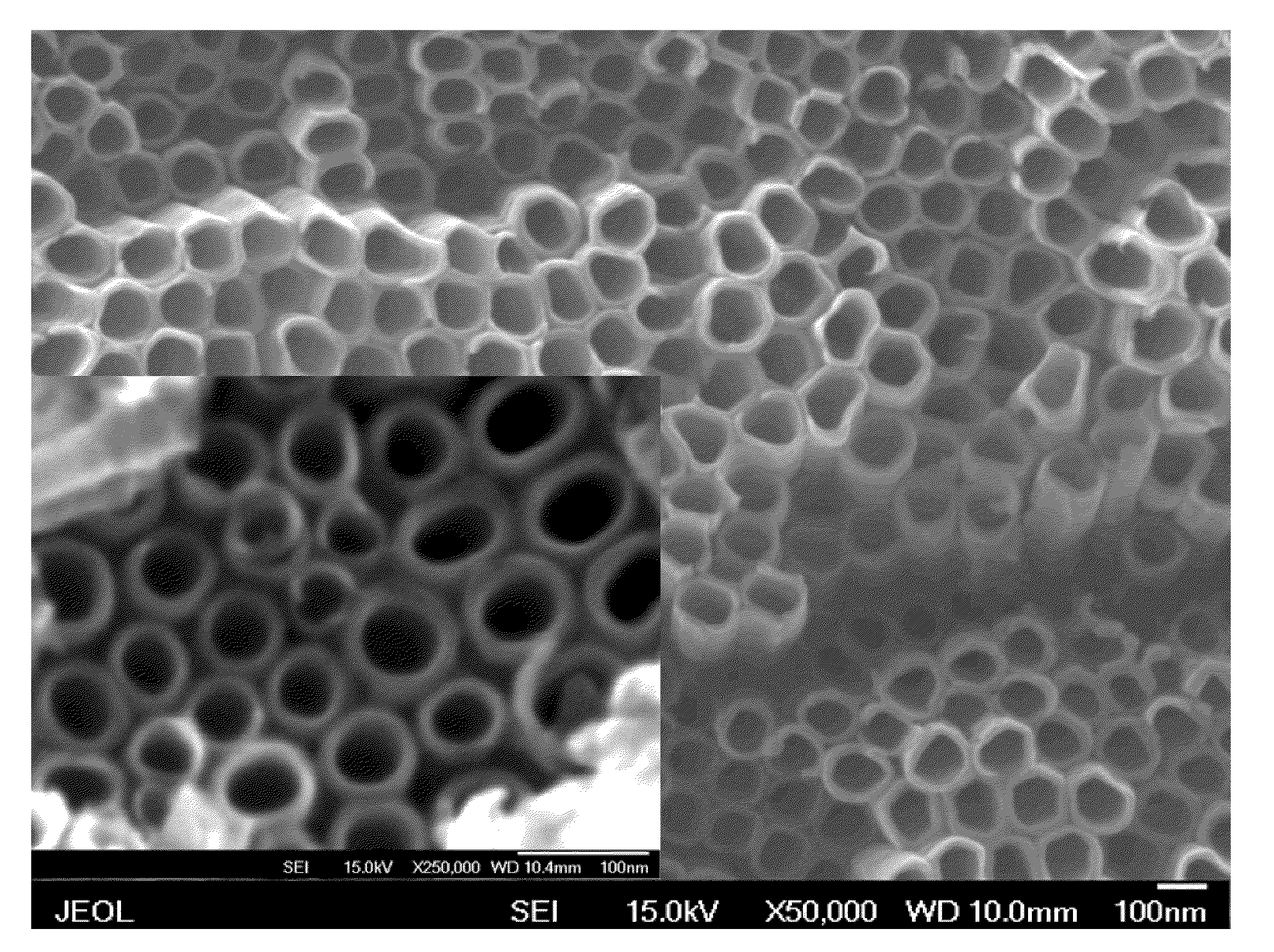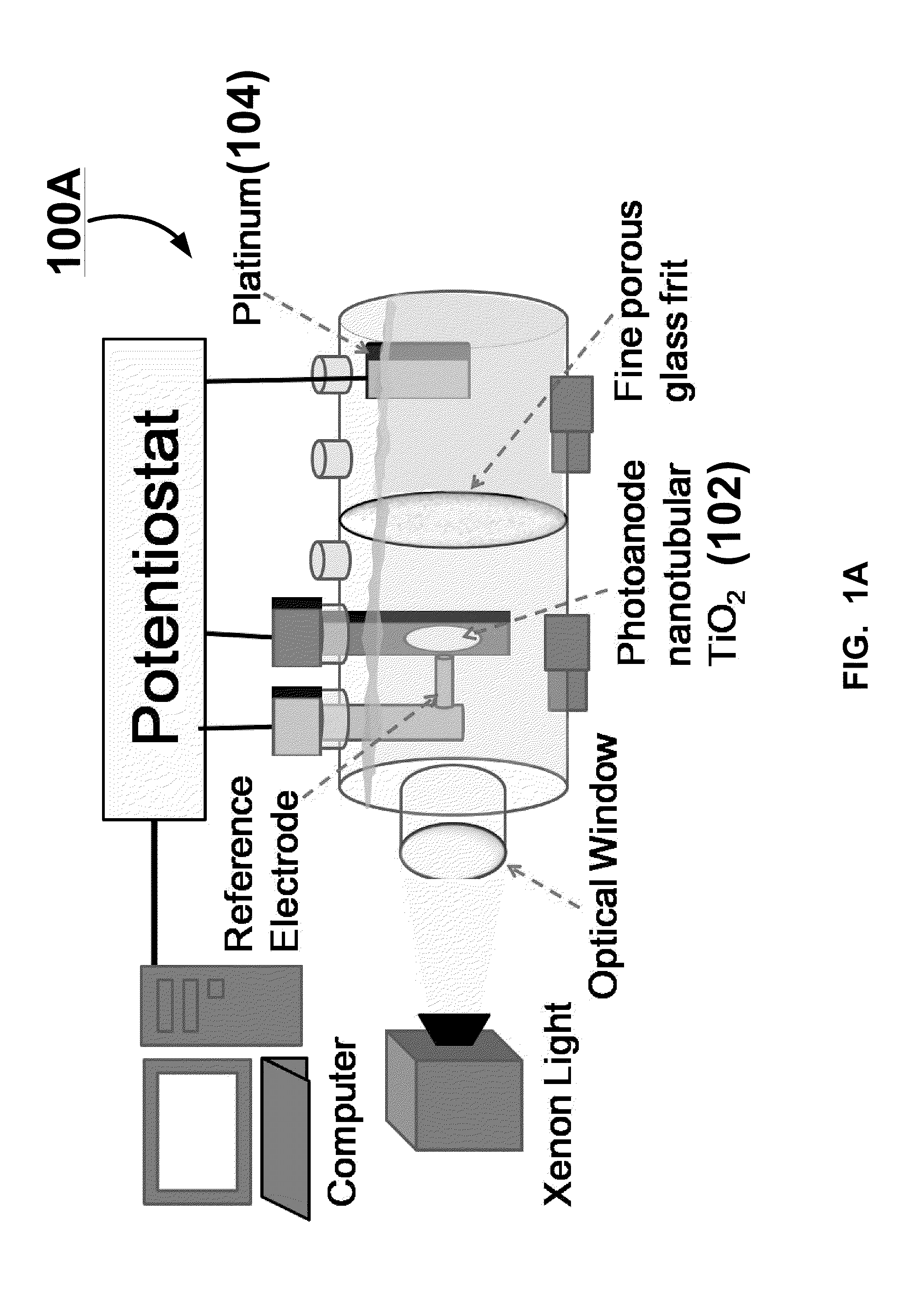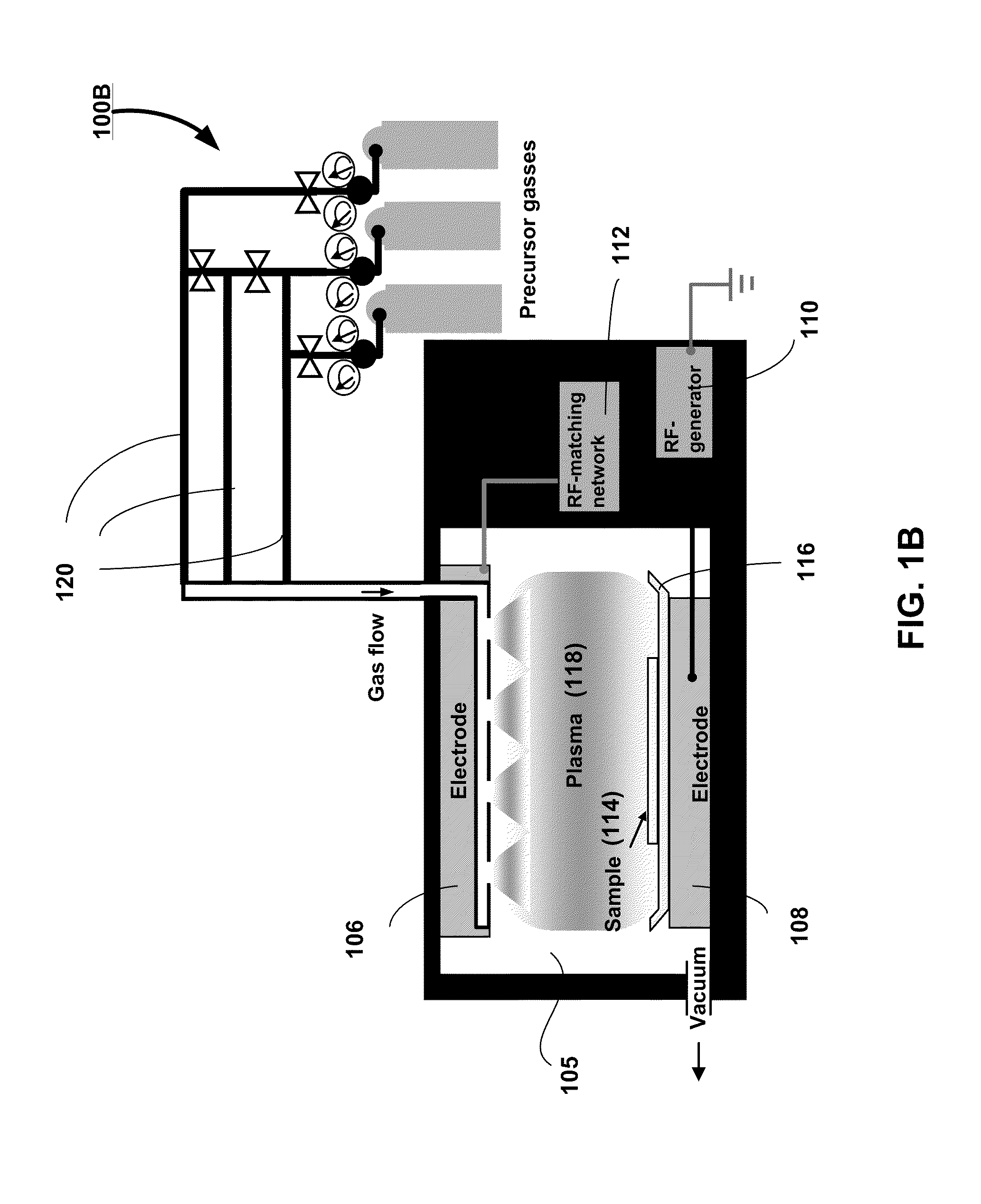ENHANCED BONE CELLS GROWTH AND PROLIFERATION ON TiO2 NANOTUBULAR SUBSTRATES TREATED BY RADIO-FREQUENCY PLASMA DISCHARGE
a radio-frequency plasma discharge and nanotubular substrate technology, applied in the direction of skeletal/connective tissue cells, prosthesis, drug composition, etc., can solve the problems of degradation, undesirable biochemical activity, and the association with this material used in implantable devices
- Summary
- Abstract
- Description
- Claims
- Application Information
AI Technical Summary
Benefits of technology
Problems solved by technology
Method used
Image
Examples
example 1
[0087]This example describes the experimental procedures according to one embodiment of the present invention.
[0088]Electrochemical Synthesis of TiO2 Nanotubular Arrays: In one embodiment of the present invention, TiO2 nanotubular and nanocrystalline structures were synthesized on a titanium metal foil support (99.9% pure, 0.5 mm thick) using a conventional anodization process (95 wt. % ethylene glycol+5 wt. % NH4F; 20 V, 1 A, 1 hour) (FIG. 1A). A two-electrode configuration 100A was used for anodization. A titanium substrate served as an anode 102. A platinum electrode (thickness: 1 mm; area: 3.75 cm2) served as a cathode 104. The distance between the two electrodes 102, 104 was kept at 4.5 cm in all experiments. Anodization was carried out at a constant potential of 20 V using a DC voltage supply (Agilent, E3640A). The anodization current was monitored continuously using a digital multimeter (METEX, MXD 4600 A). After an initial increase—decrease transient, the current reached a s...
example 2
[0097]This example describes the experimental results obtained by utilizing the exemplary processes set forth in Example 1, according to one embodiment of the present invention.
TiO2 Synthesis and Characterization
[0098]The TiO2 arrays were produced using an anodization process and a corresponding SEM image is shown in FIG. 2. It can be observed a high uniformity in the diameter of the TiO2 nanotubes which ranged between 80 to 107 nm. The height of the nanotubes was of 4 μm±10%.
Cellular Proliferation of Plasma Treated Titania Arrays
[0099]The effect of the plasma treatment on the proliferation of MC3T3-E1 cells grown on TiO2 plates was investigated and was compared with the control untreated samples. The growth ratios of the cells on the samples used in the cell proliferation assays are shown below in FIG. 3. The initial ratio of osteoblast cells growth on untreated samples showed a significantly lower value than in the treated samples. At the end of this testing time (i.e. 7 days), th...
example 3
[0111]In one embodiment, the present invention provides a method of implanting a titanium implant to a target of interest. The method includes the steps of (a) providing a titanium substrate having an array of TiO2 nanotubes formed on a surface thereof, wherein the array of TiO2 nanotubes is chemically modified by a radio frequency plasma discharge, according to various embodiments of the present invention and (b) implanting the titanium substrate into a target of interest as a replacement for a part of that target of interest. The target of interest can be, for example, a tooth, a hip, or a knee of a human being or an animal.
PUM
| Property | Measurement | Unit |
|---|---|---|
| diameters | aaaaa | aaaaa |
| height | aaaaa | aaaaa |
| radio frequency | aaaaa | aaaaa |
Abstract
Description
Claims
Application Information
 Login to View More
Login to View More - R&D
- Intellectual Property
- Life Sciences
- Materials
- Tech Scout
- Unparalleled Data Quality
- Higher Quality Content
- 60% Fewer Hallucinations
Browse by: Latest US Patents, China's latest patents, Technical Efficacy Thesaurus, Application Domain, Technology Topic, Popular Technical Reports.
© 2025 PatSnap. All rights reserved.Legal|Privacy policy|Modern Slavery Act Transparency Statement|Sitemap|About US| Contact US: help@patsnap.com



